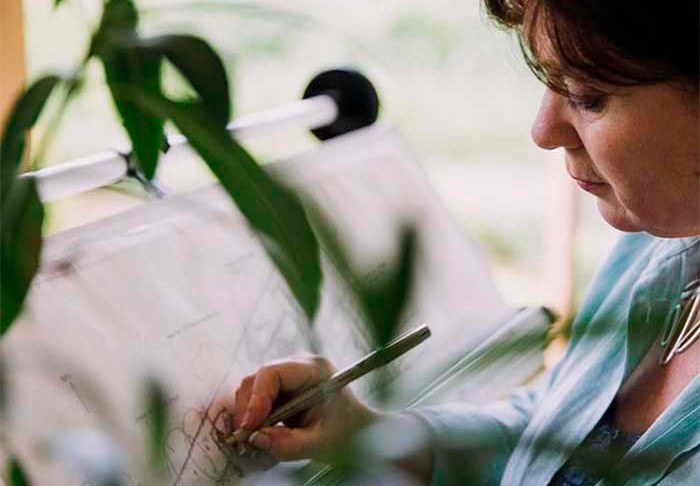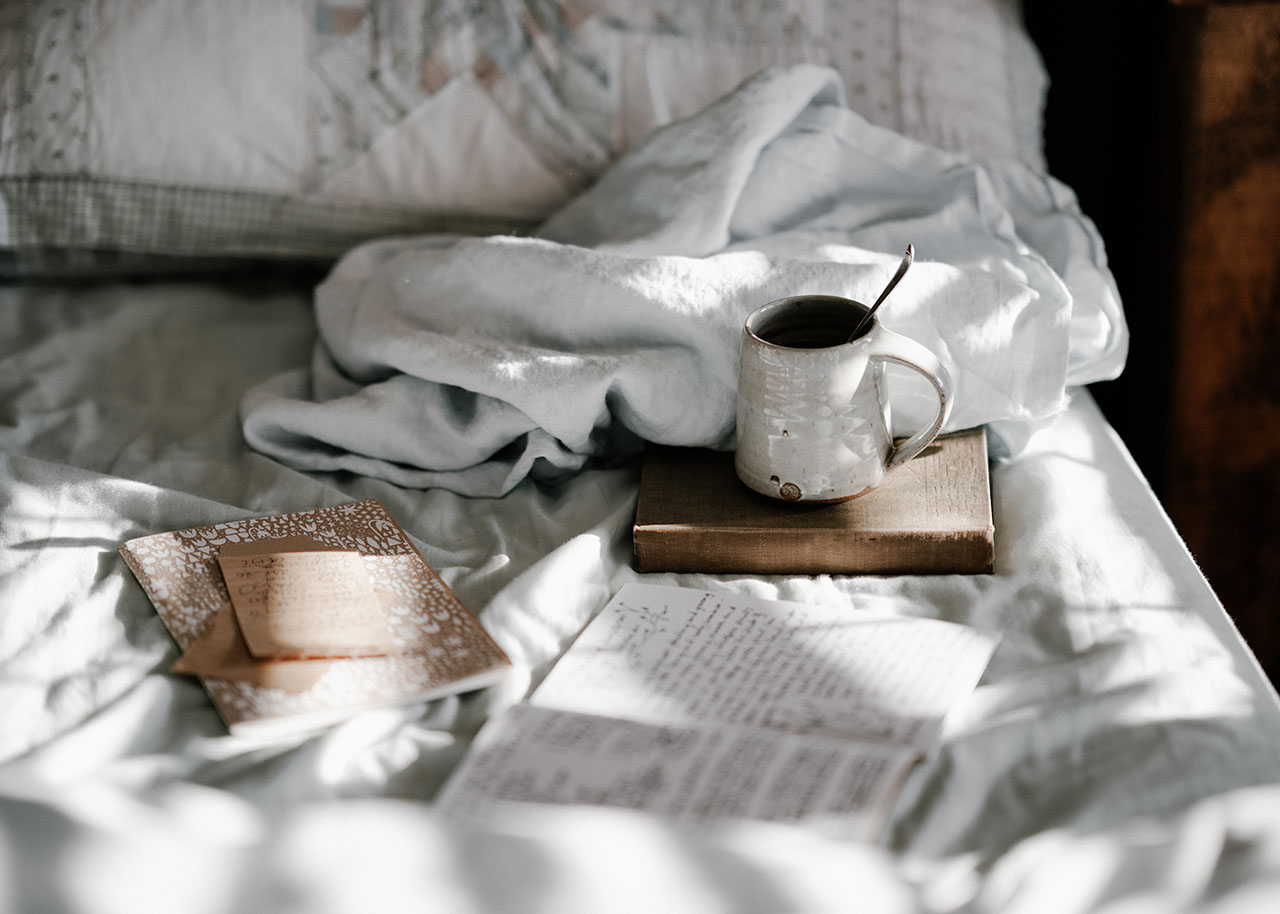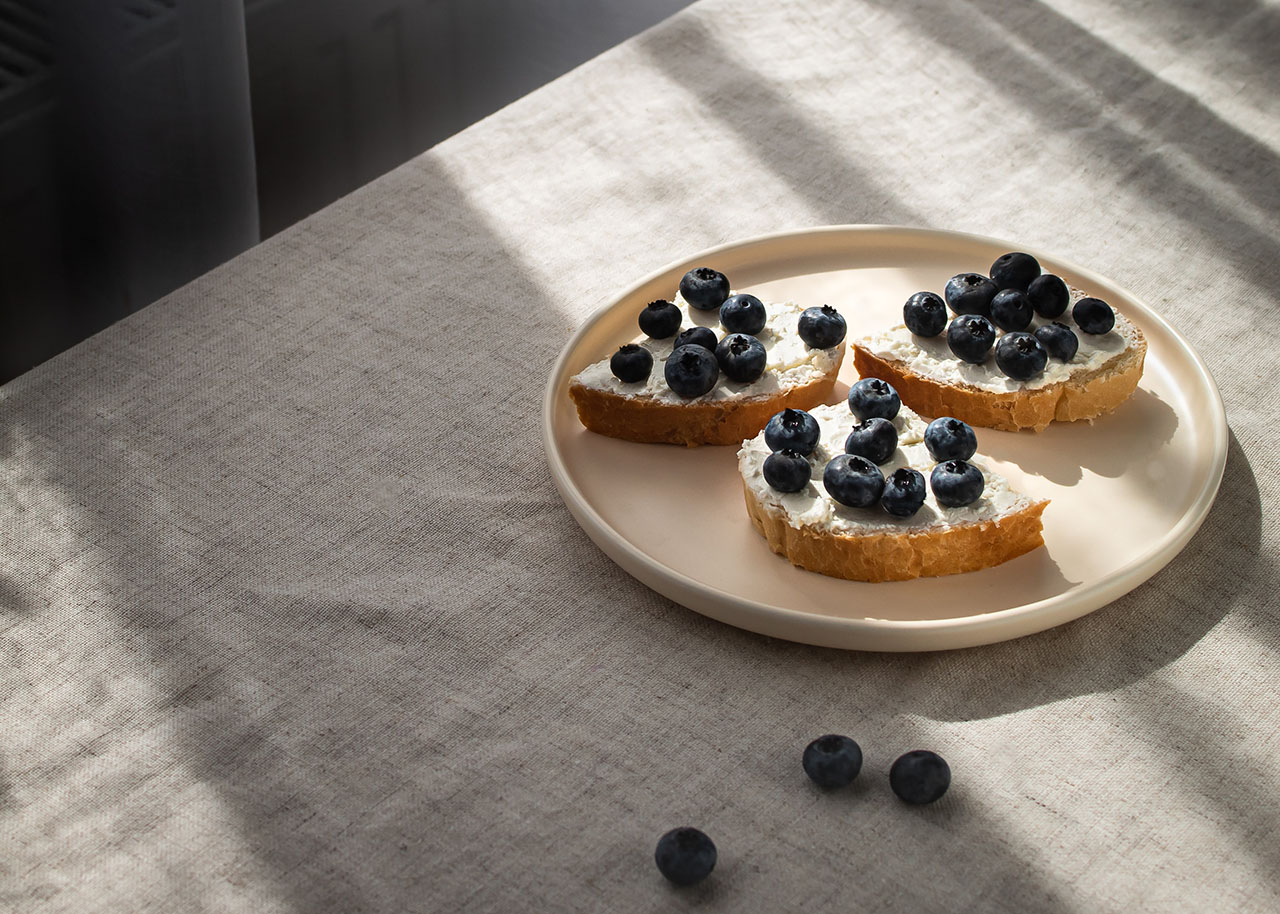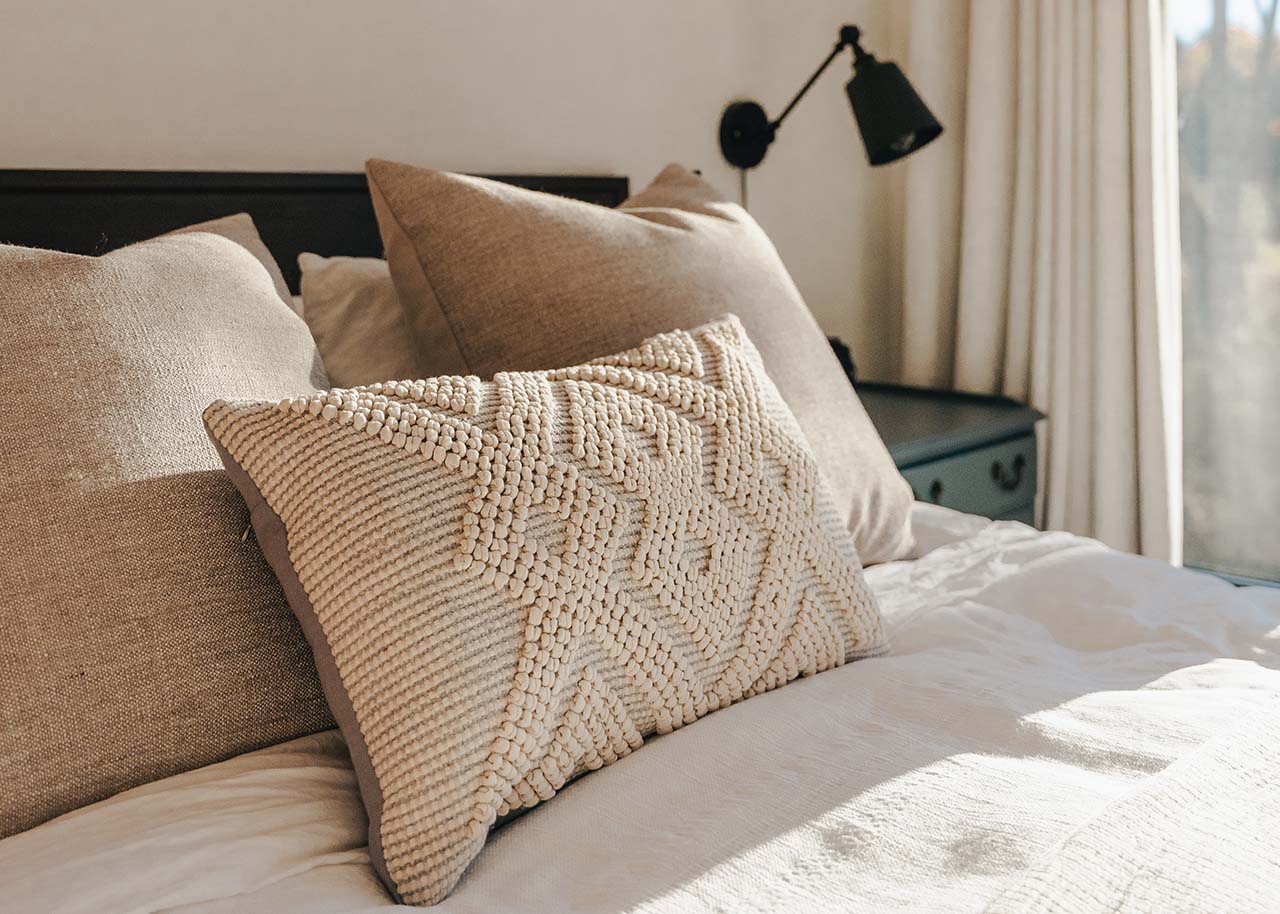‘As I step outside I become present. My senses engage and I see, hear, feel so much more – it’s a way of getting mindful for me.’
Sarah is the founder of Growthfully, a unique business that helps women to make the most of their gardens, and create a space that can nurture and nourish them throughout the year. It combines her previous careers as a garden designer and as a psychotherapist, and is based on her strongly-held belief that our gardens are integral to our wellbeing. Nurture one, and you nurture the other.
We asked about how she came up with the idea for Growthfully, what she hopes her clients take away from her sessions, and how her own garden has helped her through difficult seasons in her life.
words by Fiona Barrows and Sarah Layton / images by Sarah Layton
Hello Sarah!
Perhaps we can start with you telling us a little bit about yourself?
‘Well, I’m Sarah and I work with women to help them make the most of their precious outdoor space and, in the process, connect more deeply with themselves. It’s a two part process really, because in talking about the garden we inevitably ask questions about what is important and what is needed, both practically and emotionally. So the conversation can often become personal, as well as being very practical in a garden way.
I’m 53, have two very grown up children and a life experience that has led me here. With a history of depression and anxiety, disordered eating, and trauma it has been a real process coming to this place where I am well and happy and enjoying my life.
And my connection with my garden and nature (as well as therapy) has been crucial in my recovery. I discovered my passion for plants in my mid-twenties, at which time I was already a mum of two, when I joined a friend on a course. I didn’t really care what the course was, for me it was a chance to get out, one day a week, without a baby bag, and be myself.
That course, General Horticulture, led to a career in garden design. After eleven plus years I changed careers, and trained, and then worked, as a humanistic psychotherapist. I loved both ways of working, and gathered skills and experience which inform what I do today.’
Growthfully brings together these two careers into a very unique offering. How did you come up with the idea for Growthfully?
‘It came to me in a period of recuperation. I had been forced to stop working as a therapist because of illness – something akin to immune-overload – and, in that delicate time was thinking about my life. I wanted to find a new way to work that would offer me the opportunity to blend my two passions – working with women and wellbeing, and working with gardens.
I was also motivated by the wish to create a slow-living and sustainable way of life for myself so as to ensure I didn’t get ill again. Growthfully is an ideal blend of all this.’
How has Growthfully developed from this initial idea?
‘When I first had the idea, I didn’t have a clue as to how it would look. It was just an idea and I remember saying to my daughter that I needed to build a website, and her reply was that I needed to work out what it was I wanted to do first! Which was completely true.
My life was really turned upside down at the time as we had just moved to live in the country, so it was all up for grabs. I really didn’t have any idea how this could look, and it’s taken a while to find out, especially because as a kinesthetic learner I need to do in order to know.
However I now feel really clear, which is lovely. It’s developed into a recognition that I am as interested in the woman and her wellbeing as I am in the garden we are working on.’
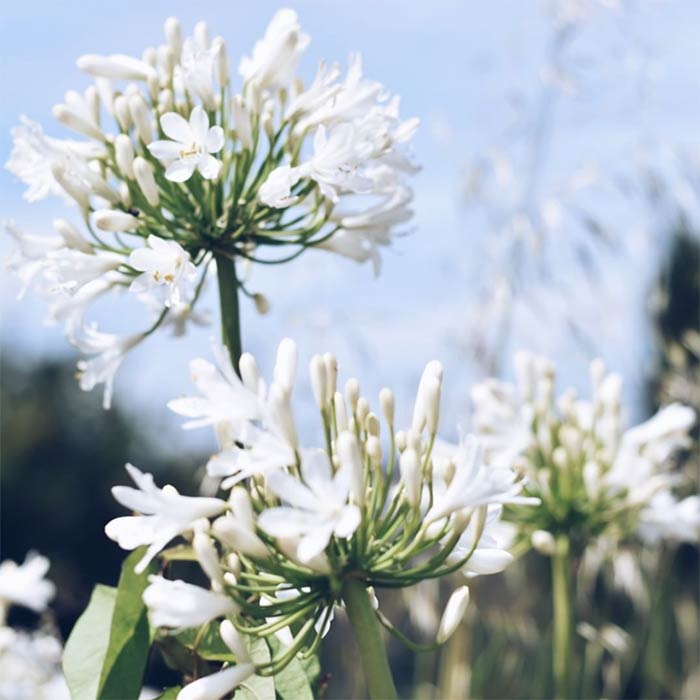
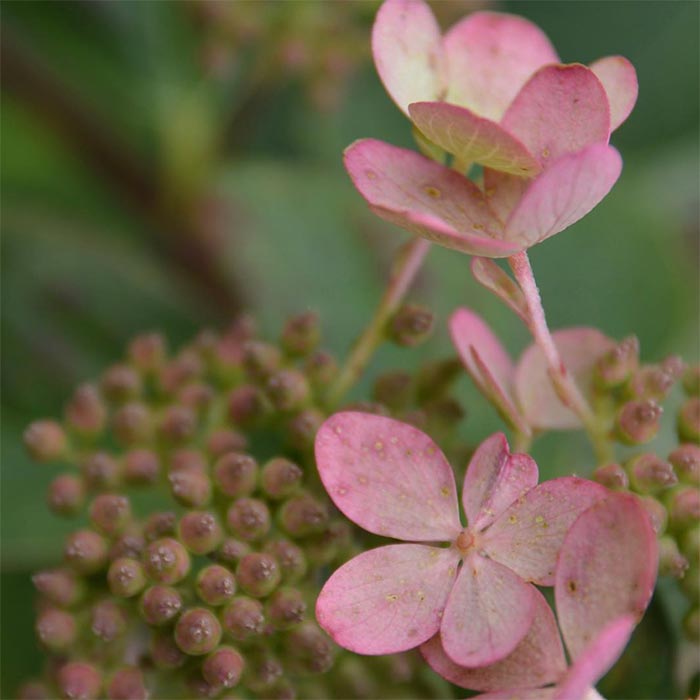
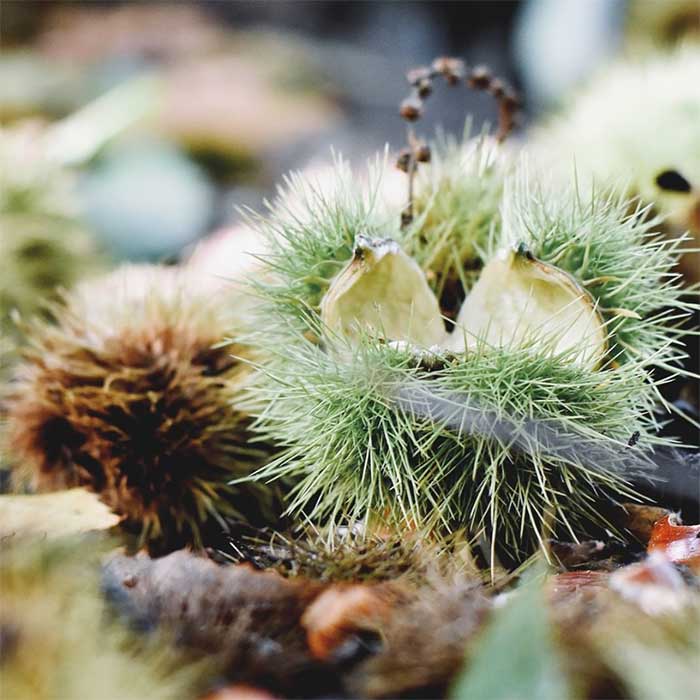

What is it that you are working towards with you clients? How do you want them to feel in their gardens afterwards?
‘What I’m really working towards is for my clients to have a space in which they feel a sense of ownership and love. A space that has evolved from them digging deep into who they are and what they want. And this process is like a pebble dropped in a lake: it will have repercussions for them in the rest of their lives. One change can be momentous.
I worked with a woman recently who had got very stuck in her garden for understandable reasons – her life had changed beyond recognition and not of her choosing. She was having trouble relating to her garden. She knew there were things that weren’t working for her, that she wanted to change, but she couldn’t quite get up the confidence on her own. There were things in her life that she wanted to be different too, and it was extraordinary how, once she took action on her own behalf in the garden, she found things started moving on a personal level too.
I listen and support and encourage. And because she felt seen and understood and because I validated her thinking, she took action. And that action led to change: for her garden, but also for herself. And that’s powerful and very moving.’
You work mainly with women. Why is this, and why do you think they are particularly drawn to the work that you do?
‘I work with women because I have experience of many of the challenges we face. I’ve worked from a place of deep unhappiness and unknowing to where I am now – enjoying my life and feeling useful and satisfied. I want to use that experience to inspire and support others.’
Why are gardens and gardening so important to your own wellbeing?
‘Having a place to step outside to, even just for a couple of minutes, that is right there, full of plants I have chosen and planted, and where I have, over time, been creative and developed my ideas, makes me very happy. As I step outside I become present. My senses engage and I see, hear, feel so much more – it’s a way of getting mindful for me.’
How does your garden support your wellbeing through the seasons?
‘This is actually a big question. There’s something about experiencing the change of the seasons through a place with which I have an intimate relationship, that I find really supportive. Plants seed, shoot, flower, set seed and die. It’s a life-cycle not unlike our own. I see the cycle of nature in my garden and it helps me accept the way things are. Nature is so much bigger than us. The trees that were here before I was born and will be here when I die. Generations have seen the hills before me. Others have nurtured and cultivated my garden, and I will pass it on in my time too. We are custodians only, part of a much bigger picture, and I find that deeply reassuring. Though, of course, climate change is a worry.’
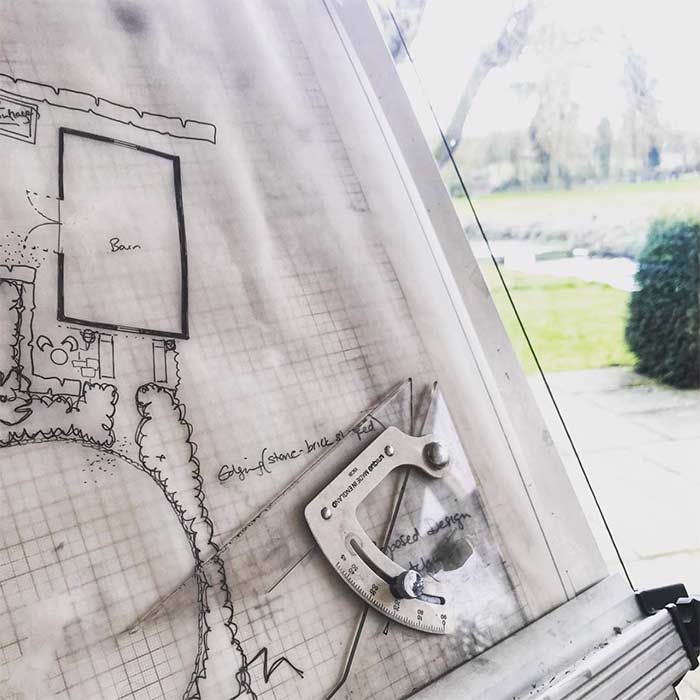
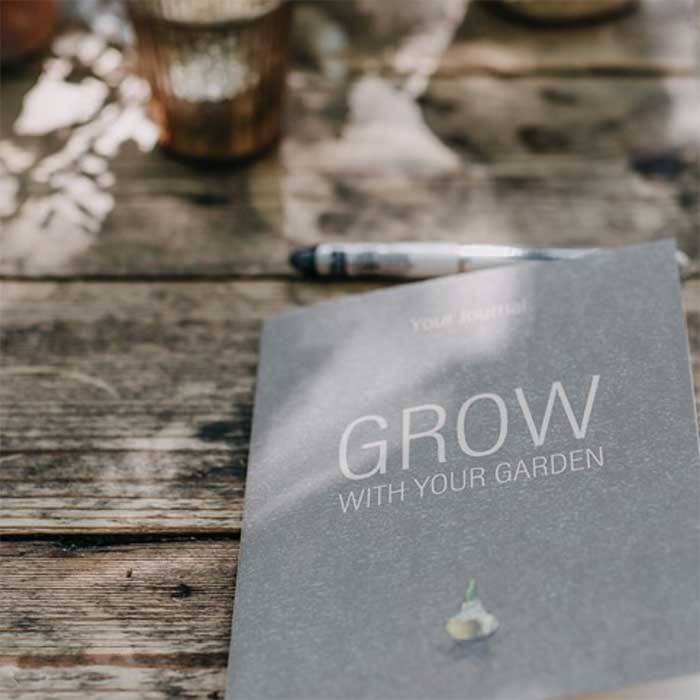
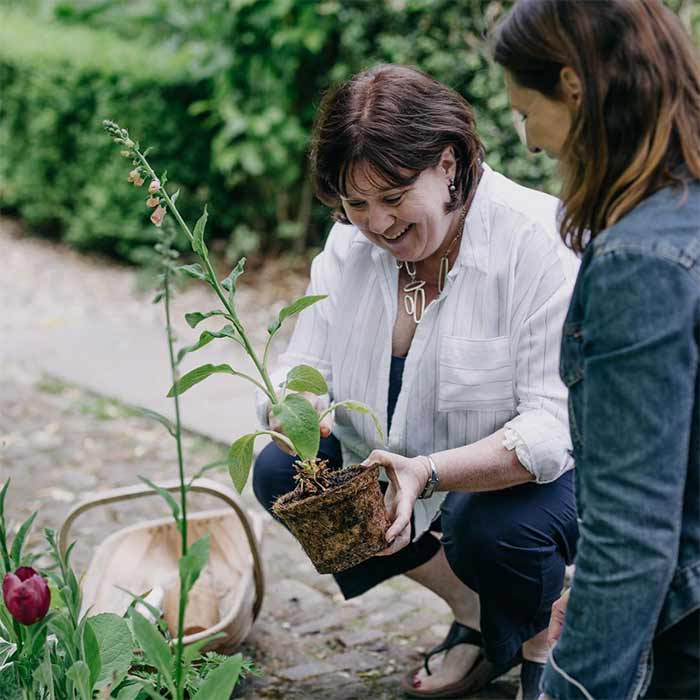
What is your favourite part of your garden, or your favourite thing to do in your garden?
‘I am really enjoying my greenhouse and vegetable patch, both of which we created earlier this year. I have had a wonderful time experimenting with seed growing – it’s been amazing – and growing vegetables.
Oh – and the bed in front of the house which is the only bit of ornamental planting I have created since we arrived. It’s glorious and messy – full of colour and texture even now, in the middle of winter – and I absolutely love it.’
The conversation around mental health, wellbeing, gardening and nature seems to have really taken hold over the last few years. Why do you think this is?
‘Ah – this is interesting. I think it’s because, thankfully, the conversation around mental health had been gathering pace in this country in any case, and several well-known celebrities have been speaking out about how their gardens support them too which brings the subject into the popular consciousness.
Kim Wilde described about how ‘horticulture really brought me back to life’ in 2015 and Will Young described how being in his garden grounds him and supports his mental wellbeing in June this year. Monty Don has, of course, talked and written, about his mental health and the way his garden supports him for decades, and the Chelsea Flower Show this year, and last, highlighted the connection between gardens and mental health throughout. And of course the Duchess of Cambridge was involved in a garden too – highlighting the importance of the great outdoors in keeping our children well both mentally and physically.
Oh – and there is now scientific proof that there is a substance in the soil which triggers the production of serotonin in us, and there’s the whole Japanese forest bathing trend as well and doctors are now even prescribing gardening. Oh – I could go on and on…’
And finally, what does slow living mean to you?
‘It’s interesting because I’ve only just begun to associate the phrase with the life I aspire to lead. Having said that, slow living for me means I have time to stop and stare, get off my phone and rest often. It means enjoying nature and friendships and good food. It means being away from the city and embracing country life.
It means being patient and taking time to do something – pick blackberries and elder-flowers and going to the trouble of creating with them, and sharing and enjoying the benefits with friends and family. I’m also focusing on supporting local businesses and trying to order books from my local bookshop rather than online as well as supporting independent businesses wherever I can.’
SLOW FIRE QUESTIONS
Favourite place to read a book: On the sofa, wrapped in a rug under which Milly is snuggled, in my studio at the bottom of our garden. It’s an oak framed building with three sides of glass, next to the stream with a piece of Local Nature Reserve protected land opposite. I can lie there and watch rabbits, red kites, the odd muntjac and an egret.
Favourite coffee or tea shop: Hmm. I think it’s Norsk in Haddenham at the moment. But Ginger & White in Hampstead comes a close second. If only it was near here.
Favourite place in nature: The woods between where I live and Henley – truly beautiful.
Favourite independent shop or maker: There is a gorgeous shop in Wallingford called Wildwood where the owner, Nicky, sells plants and lovely pots, macrame she makes herself, painted furniture and lots of other lovely things.
Favourite slow living ritual: Currently it’s lighting my The Smallest Light candle – I have Comfort and Joy – and taking a moment to appreciate the flame whilst drinking a lovely warm drink next to the Aga. Milly is in her basket and all is well. I also love spending time pottering in the greenhouse or garden – sowing seeds or planting bulbs, or deadheading. Anything that doesn’t require much thought and takes me to a state of flow – where one thing leads to another and hours pass without me noticing. I love that.
SARAH’S SLOW LIVING TIP
A winter tip:
Plant an amaryllis – or narcissus – bulb in water
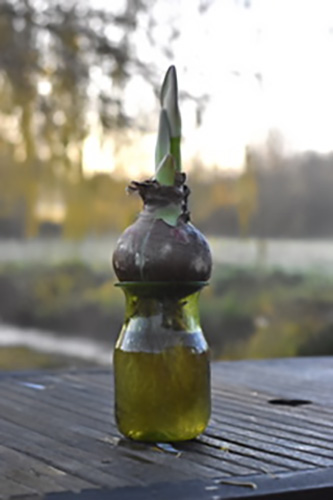
‘Make time to get outside in nature every day if you can – walk or potter in the garden if you work from home – or if you’re in a city, make it a priority to get out at lunchtime and enjoy somewhere green – even just sit under a tree. Take a few deep breaths and let them out slowly. Come present to yourself. I find that it’s absolutely crucial for my wellbeing – if I miss getting out for more than a day I really notice my mood dropping.
And to enjoy the pleasure of seeing real growth in the winter try this:
Find a vase with a neck that will support the bulb so that it’s roots, or base if there aren’t any roots, can drink but the bulb itself is dry, and fill it with water. Place the bulb on top and in a bright but not hot spot. Watch the roots begin to reach down and wait for the wonderful day when the tip of the first leaf shows itself and you’re off…’
